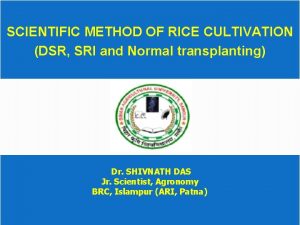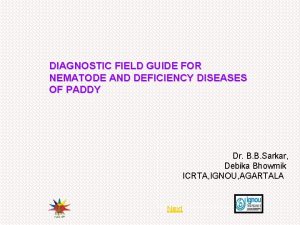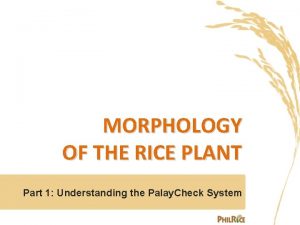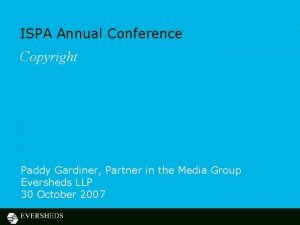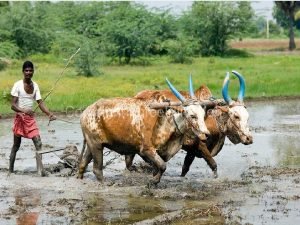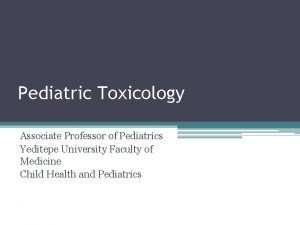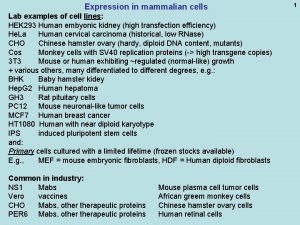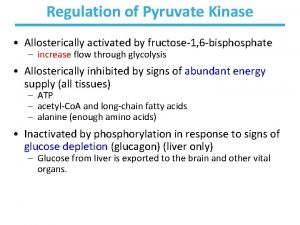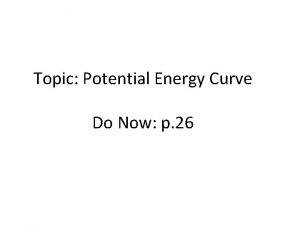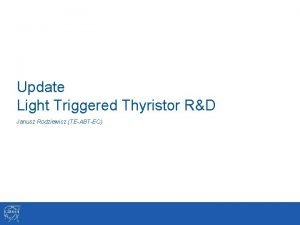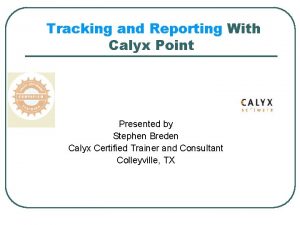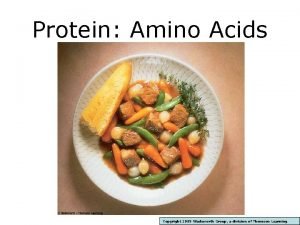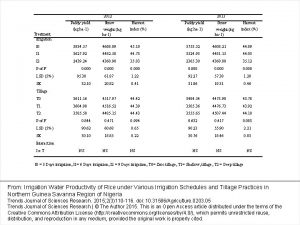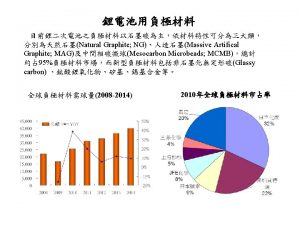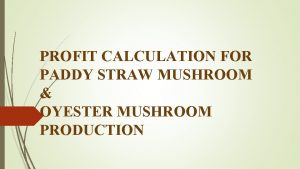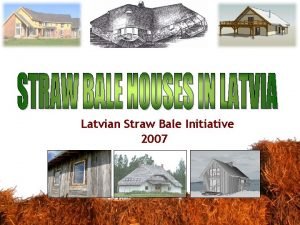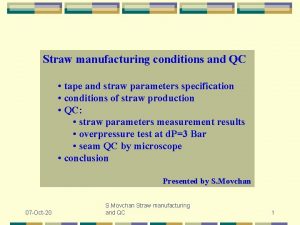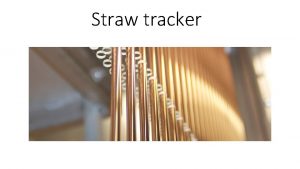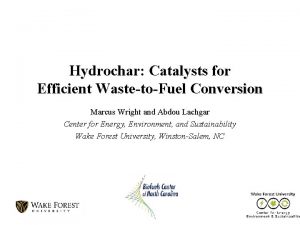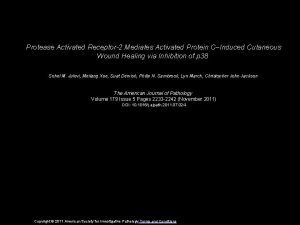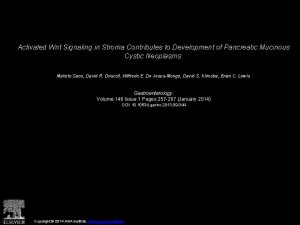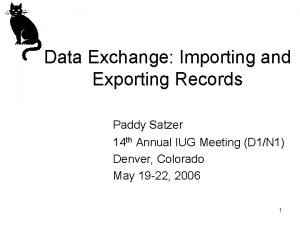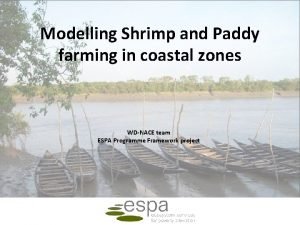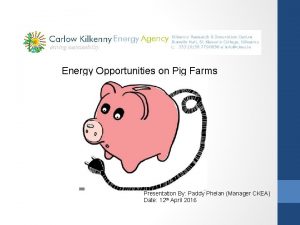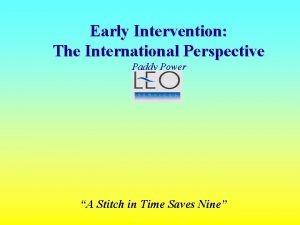Development of Activated Hydrochar from Paddy Straw for




















- Slides: 20

Development of Activated Hydrochar from Paddy Straw for Nutrients Adsorption and Crop Water Management G. A. G. Kavindi 201726054 Supervisor : Prof. Zhongfang Lei

Content • • • Paddy straw Hydrochar Mechanism Justification Objectives Material and Methodology Result and Discussion Conclusion Future studies References 2

Paddy Straw • Paddy - world’s third largest cereal crop • Rice - Staple of Sri Lanka • paddy straw is abundant lignocellulose waste material • Total straw production in Sri Lanka 3. 4 million tonnes/year • Uses paper production construction materials compost energy source animal feed • Burning in the fields- cost-effective but environment pollution Source: www. newsclick. in 3

Hydrochar • Paddy straw hydrochar - reduce crop waste generation • Reduce CO 2 emission with carbon sequestration • Hydrochar production- hydrothermal carbonization process under subcritical water condition • Characteristics – microporosity ion exchange capacity water holding capacity large specific surface area low H: C and O: C ratios 4

Mechanisms Source : Oliveira et. al, 2017 5

Hydrochar Advantages over Biochar • Cost Effective due to less energy consumption • Applicable for wet biomass Applications • Moisture conservation technique • Soil conditioner (saline and acidic soil) • Improve soil Bulk density (Crop and root growth) • Enhance microbial growth • Removal of Hazardous chemicals • Renewable energy production 6

Justification • In Sri Lanka annual rainfall decrease and irregular rainfall cause crop water management problems • Degradation of arable lands and population growth • Crop intensification • Limitations of nutrient availability (Phosphorus) • Leachate of nutrients • Agriculture – responsible for eurtophication • Required proper moisture conservation and nutrient management techniques Source: www. open. edu 7

Objectives • Determine the P and N adsorption capacity of the produced hydrochar • To determine the water holding capacity of hydrochar as a moisture conservation technique • Optimal procedures for hydrochar production from paddy straw 8

Materials and Methodology Hydrochar production 10 g Paddy straw : 100 ml DW 1: 10 w/v HTC temperature ( C) 100 HTC holding time (min) 0 60 120 T 1 T 2 T 3 200 T 4 T 5 T 6 250 T 7 T 8 T 9 Hydrothermal Reactor Capacity 200 ml 9

Methodology Parameter Methodology Yield M hydrochar/M paddy straw*100 p. H meter EC EC meter Bulk Density Weight of sample (g)/ Volume of sample (ml)*100 (M 2 -M/M 1 -M ) *100 (M 1 - initial wt, M 2 wt after absorption, M- wt of container) Moisture absorption capacity Volatile matter content Muffle furnace at 600 0 C for 4 hrs Nutrient adsorption Batch adsorption test and adsorption isotherm 10

Result and Discussion Table 1 : Hydrochar yield, Bulk density and Solid percentage Bulk density (%) Volatile Matter (%) Ash + Fixed carbon (%) 12. 0 HTC Holding Temperature Time (0 C) (min) Yield (%) T 0 T 1 paddy straw 100 0 81. 5 18. 9 14. 6 88. 0 T 2 100 60 81. 5 15. 2 86. 0 14. 0 T 3 100 120 81. 4 14. 9 88. 2 11. 8 T 4 200 0 78. 2 15. 3 84. 0 16. 0 T 5 200 60 60. 1 16. 8 82. 0 18. 0 T 6 200 120 58. 2 14. 2 78. 0 22. 0 T 7 250 0 56. 5 29. 5 78. 0 22. 0 T 8 250 60 50. 5 39. 0 72. 0 28. 0 T 9 250 120 45. 0 33. 0 70. 0 30. 0 12. 0 11

Result and Discussion With increasing temperature and holding time, • Yields declined and rapid decline observed above 200 0 C • Bulk Density decreased compared to feedstock • Porosity tend to increase with increasing temperature • Contrary Higher bulk density observed at 250 0 C • Volatile matter content decreased with organic matter removal • Fixed carbon content increased with breakage of lignocelulose T 0 - paddy straw T 4 – 200 0 C, 0 min T 7 - 250 0 C, 0 min T 8 - 250 0 C, 60 min Figure 1: Hydrochar at different temperature and exposing time T 9 -250 0 C, 120 min 12

Result and Discussion Table 2 : Hydrochar p. H and Electrical conductivity changes Temperature (0 C) T 0 T 1 T 2 T 3 T 4 T 5 T 6 T 7 T 8 T 9 Time (min) paddy straw 100 100 200 250 250 0 60 120 p. H EC (ms/cm) 7. 7 6. 5 6. 3 5. 6 5. 1 4. 8 5. 7 5. 4 5. 8 5. 1 2. 76 2. 48 2. 69 2. 86 3. 30 4. 50 2. 11 3. 02 3. 82 3. 63 13

Result and Discussion • • • p. H Change from neutral to Slight acidic condition Minimum p. H in (T 5)200 0 C for 60 minute holding time EC increased with increasing temperature Maximum EC observed for T 5 followed by T 8 EC and p. H depend on production process and feedstock type p. H and EC is important as per the application Figure 2: Prepared hydrochar samples for p. H and EC measurement 14

Result and Discussion Moisture absorption rate (g/1 g of hydrochar) 6 T 0 - paddy straw T 1 - 100°C, 0 min T 2 -100°C, 60 min T 3 -100°C, 120 min T 4 -200°C, 0 min T 5 -200°C, 60 min T 6 -200°C, 120 min T 7 -250°C, 0 min T 8 -250°C, 60 min T 9 -100°C, 120 min 5 4 3 2 1 0 0 5 10 15 20 25 30 Time (hours) Figure 3 : Moisture absorption rate of different hydrochar over time • Maximum absorption T 5 5. 39 g/ 1 g of hydrochar followed by 5. 17 g/ 1 g of hydrochar T 9 • Minimum absorption feedstock- 2. 41 g/ 1 g of hydrochar • Water holding capacity increase with increasing porosity • Micro-pores and meso-pores are responsible for water holding 15

Conclusion • Char Yield negatively correlated with HTC temperature • Least yield 45% at T 9 - (250 0 C 120 minutes) • Lowest p. H (4. 8) and maximum EC (4. 5 ms/cm) in T 5 (200 0 C for 60 minutes) • Maximum Water holding capacity in T 5 - 5. 39 g/ 1 g of hydrochar • Water holding capacity – two times higher than feedstock • Total pore volume of hydrochar increase with increasing HTC temperature • T 5 most suitable hydrochar type as moisture conservation measure 16

Future Studies • Determination of the P and N adsorption capacity of the produced hydrochar • Study the P and N adsorption kinetics and Isotherms 17

Figure 4: Hydrochar at moisture absorption test Figure 5: Hydrochar samples after drying 18

References • Ahmad, M. , Rajapaksha, A. U. , Lim, J. E. , Zhang, M. , Bolan, N. , Mohan, D. , … Ok, Y. S. (2014). Biochar as a sorbent for contaminant management in soil and water: A review. Chemosphere, 99, 19– 23. • Oliveira, F. R. , Patel, A. K. , Jaisi, D. P. , Adhikari, S. , Lu, H. , & Khanal, S. K. (2017). Environmental application of biochar: Current status and perspectives. Bioresource Technology, 246(August), 110– 122. • Qambrani, N. A. , Rahman, M. M. , Won, S. , Shim, S. , & Ra, C. (2017). Biochar properties and eco-friendly applications for climate change mitigation, waste management, and wastewater treatment: A review. Renewable and Sustainable Energy Reviews, 79(November 2016), 19

Thank You 20
 Paddy madden gardening
Paddy madden gardening Sabour shree paddy
Sabour shree paddy Khaira rog in paddy
Khaira rog in paddy Auricle of rice
Auricle of rice Paddy gardiner
Paddy gardiner Formula of central limit theorem
Formula of central limit theorem In which season is paddy cultivated in india
In which season is paddy cultivated in india What value does paddy maguire see in a fur coat
What value does paddy maguire see in a fur coat Paddy madden school garden
Paddy madden school garden Fluorescence-activated cell sorting (facs)
Fluorescence-activated cell sorting (facs) Activated charcoal phails
Activated charcoal phails Mobile vehicle activated signs
Mobile vehicle activated signs Activated b cell
Activated b cell Fluorescence activated cell sorting
Fluorescence activated cell sorting Pyruvate kinase is allosterically activated by
Pyruvate kinase is allosterically activated by Activated complex
Activated complex How to activate stb
How to activate stb Light activated thyristor
Light activated thyristor Calyx tracking
Calyx tracking Activated sludge process
Activated sludge process Digestion of protein in body
Digestion of protein in body

